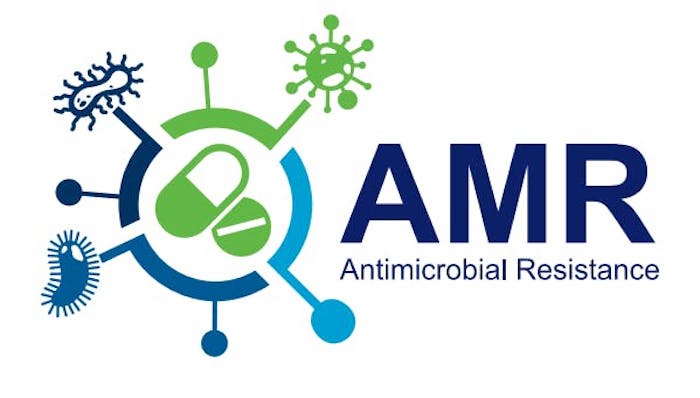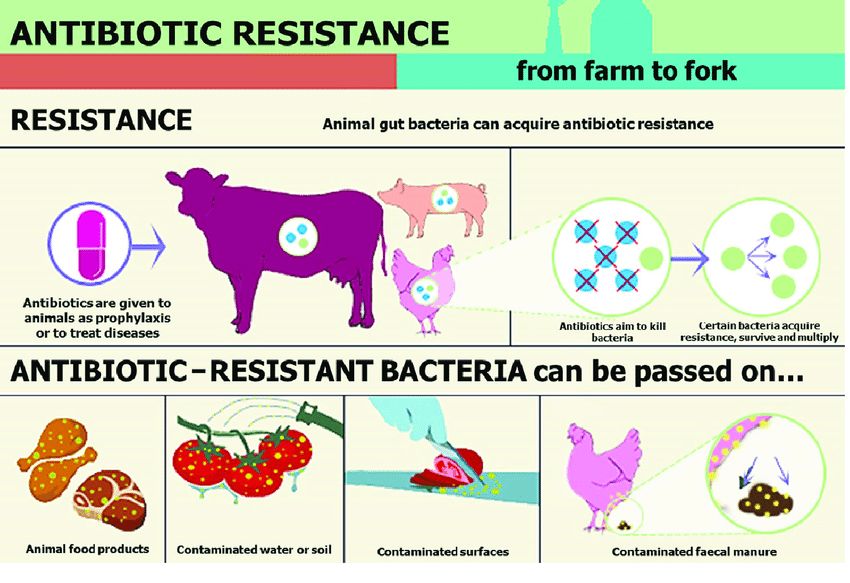Lerato Matheka
Antimicrobial resistance (AMR) has become a leading cause of death across Africa, surpassing HIV, malaria, and tuberculosis (TB), a new report by the Africa Centers for Disease Control and Prevention (CDC) has revealed.
AMR, which occurs when bacteria, viruses, fungi, and parasites no longer respond to antimicrobial drugs, has been accelerated by human behaviours such as overuse and misuse of antimicrobials in human and animal health sectors.
According to the report, antimicrobial resistance (AMR) has emerged as a leading cause of death in the African region, surpassing fatalities from malaria, HIV, and TB.
“The existential impacts of AMR are far-reaching, posing threats to the achievement of the Sustainable Development Goals (SDGs) and Universal Health Coverage (UHC). It represents a significant public health challenge,” the report noted adding that in 2019, 4.95 million deaths globally were associated with bacterial AMR, of which 1.27 million deaths were directly attributable to AMR.
“This surpasses the burden of HIV and Malaria, revealing AMR as a leading cause of global mortality, and sub-Saharan Africa is facing the direst consequences. In addition to death and disability, AMR carries substantial economic implications at personal, national, and global levels.
In 2019, Sub-Saharan Africa experienced the highest rate of AMR burden, with 23.7 deaths per 100,000 people and 255,000 deaths attributed to AMR, surpassing mortality from Malaria and HIV/AIDS,” the Africa CDC reported.
Africa CDC indicated that although AMR affects populations in both high- and low-income countries (LMICs), the Global Research on Antimicrobial Resistance (GRAM) study identified the highest burden in low-resource settings, which face the greatest burden of infectious diseases and have weaker health systems.
Africa bears a significant burden of infectious diseases, accounting for approximately 95 percent of malaria deaths, 70 percent of people living with HIV, and 25 percent of TB deaths globally.
A coordinated regional response
In response to this growing threat, African nations have adopted the AMR Global Action Plan and the African Union Framework for Antimicrobial Resistance Control 2020–2025.
While most countries in the region have developed National Action Plans (NAPs) to combat AMR, the Africa CDC report acknowledges that “…the overall response remains inadequate given the magnitude of the threat, which endangers human, animal, environmental, aquatic, and plant health.”
The report points out that addressing AMR in Africa requires a comprehensive, multi-sectoral approach involving the entire society.
“Sustainable access to antimicrobials, including antibiotics, vaccines, and therapeutics, is crucial, as lack of access leads to more morbidity and mortality than AMR itself. Support for the region should focus on preventing infections, strengthening health and food systems, developing human resources, ensuring sustainable access to diagnostics and therapeutics, and investing in laboratory infrastructure to support surveillance and data generation.”
Major drivers of AMR in the region include overuse and misuse of antimicrobials, environmental contamination from hospital and pharmaceutical waste, and a lack of access to quality-assured antimicrobials and diagnostics. “One in three hospitals in the region lacks clean, safe running water, and one in eight people defecate openly due to inadequate sanitation,” the report highlights, underscoring the need for urgent investments in Water, Sanitation, and Hygiene (WASH) programs and infection prevention measures.
The cost of inaction
AMR not only leads to higher mortality and morbidity rates but also threatens Africa’s socioeconomic progress. The financial requirements for an effective AMR response in Africa are estimated to be between USD 2–6 billion annually. However, current funding levels fall short.
The report states, “The estimated annual budget for AMR NAPs is around USD 100 million, indicating a substantial funding gap that necessitates additional support from both governments and the international community.”
Failing to address AMR, the Africa CDC said that could significantly impact the region’s ability to achieve key Sustainable Development Goals (SDGs), including those related to poverty elimination, health for all, and Universal Health Coverage (UHC).
“AMR’s impact extends beyond morbidity and mortality, threatening the achievement of Agenda 2030 goals,” the report notes.
Furthermore, the World Bank anticipates that AMR could result in additional healthcare expenses of up to US$1 trillion by 2050, with annual global GDP losses ranging between US$1 trillion and US$3.4 trillion by 2030.
A call to action
To mitigate the looming crisis, the Africa CDC report calls for a comprehensive, multi-sectoral approach that involves the entire society.
“Addressing AMR in Africa requires a comprehensive, multi-sectoral approach involving the entire society,” the report emphasises. Sustainable access to antimicrobials, including antibiotics, vaccines, and diagnostics, is essential, along with strengthened health systems and investments in laboratory infrastructure to support surveillance and data generation.
The report also stresses the importance of regional and international partnerships for resource mobilisation and technical support, emphasising multi-sectoral collaboration, integrating efforts across human health, animal health, and environmental sectors, and fostering regional and international partnerships for resource mobilisation and technical support as crucial.
Summary
- Africa CDC indicated that although AMR affects populations in both high- and low-income countries (LMICs), the Global Research on Antimicrobial Resistance (GRAM) study identified the highest burden in low-resource settings, which face the greatest burden of infectious diseases and have weaker health systems.
- Major drivers of AMR in the region include overuse and misuse of antimicrobials, environmental contamination from hospital and pharmaceutical waste, and a lack of access to quality-assured antimicrobials and diagnostics.
- “One in three hospitals in the region lacks clean, safe running water, and one in eight people defecate openly due to inadequate sanitation,” the report highlights, underscoring the need for urgent investments in Water, Sanitation, and Hygiene (WASH) programs and infection prevention measures.

Your Trusted Source for News and Insights in Lesotho!
At Newsday Media, we are passionate about delivering accurate, timely, and engaging news and multimedia content to our diverse audience. Founded with the vision of revolutionizing the media landscape in Lesotho, we have grown into a leading hybrid media company that blends traditional journalism with innovative digital platforms.






